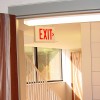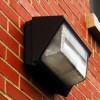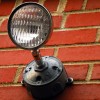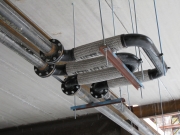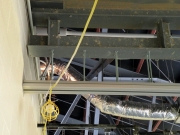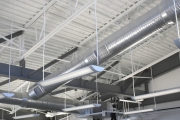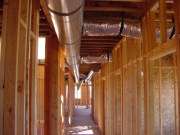Jeff Wilson Everyday DIY Blog
Let's talk DIY
This is the place to rant, rave, brag, belly-ache, crack a joke, procrastinate, and delve into the metaphysical aspects of the DIY mindset. We’re off the map, on a tangent, and frequently off topic. This is the stuff we don’t show on TV.
Interior Lighting
Exit Signs
Security Lighting
Display Lighting
Parking Lighting
Landscape Lighting
Expansion Fittings and Loops for HVAC Piping
Expansion fittings and loops may be required in any piping system which contains fluids with temperatures elevated above normal room temperature. Most piping in commercial systems is comprised of metals; common piping materials include copper, black iron, steel and stainless steel. When heat is applied to metal, it undergoes thermal expansion. The rate of expansion depends upon the metal and the heat being applied. In piping, there are two directions in which thermally expansion can take place: circumferential and longitudinal. Circumferential lengthening is negligible and therefore is not a concern. But longitudinal expansion, depending on how long a pipe is run, can be several inches or more. Because piping is rigid, if the change in length is not provided for via expansion fittings or loops, the pipes can shear the connections and cause ruptures. Different metals expand at different rates, but all expand with the addition of heat. Expansion fittings and loops allow the piping to expand without failure.
Duct Insulation
There are three purposes for duct insulation: to retard the flow of heat, to reduce the amount of duct-transmitted sound, and/or to act as a vapor barrier. To retard the flow of heat, ducts may be insulated on the inside with duct liner, or on the outside with duct wrap. To reduce the amount of duct-transmitted sound, a product called sound liner may be used. As a vapor barrier, ducts are usually wrapped with a vapor sealable material such as foil or plastic.
HVAC Air Distribution
Air distribution refers to the distribution of air to and from conditioned spaces within a building. An air distribution system includes all sub-components, such as fans, filters, dampers, ductwork, etc. Air distribution systems come in a variety of material types, for example, fiberglass and galvanized metal. In fact, many different kinds of ducts may be found in a single air distribution system.
Fibrous-Glass Ducts
Fibrous-glass ducts are constructed from fiberglass board and are available in several variations. Variations include, but are not limited to: standard duct board, medium high velocity duct board, and environmentally pure duct board.


